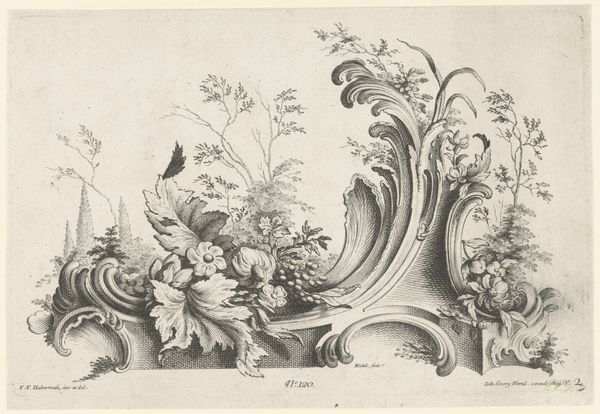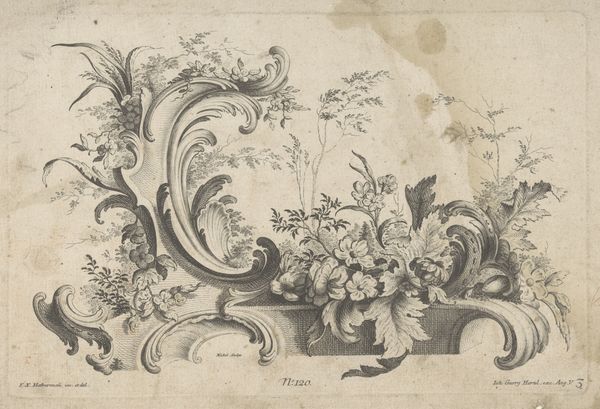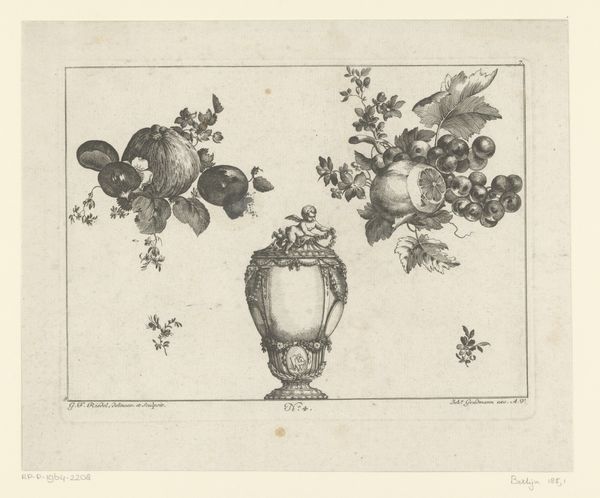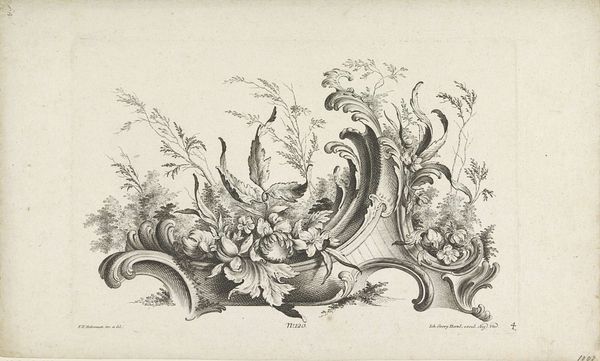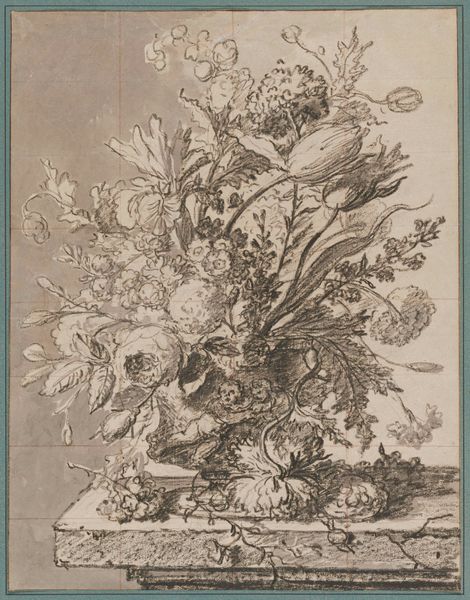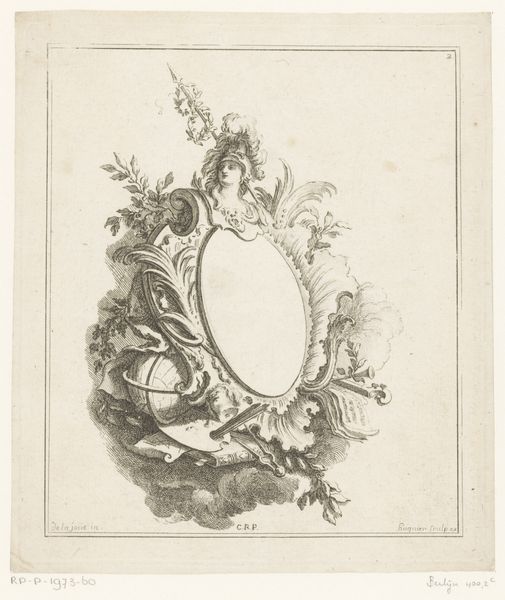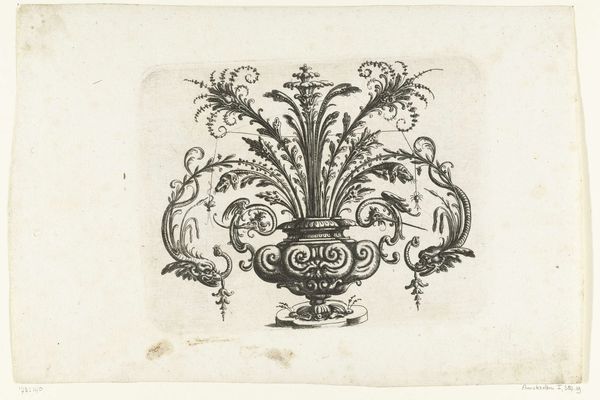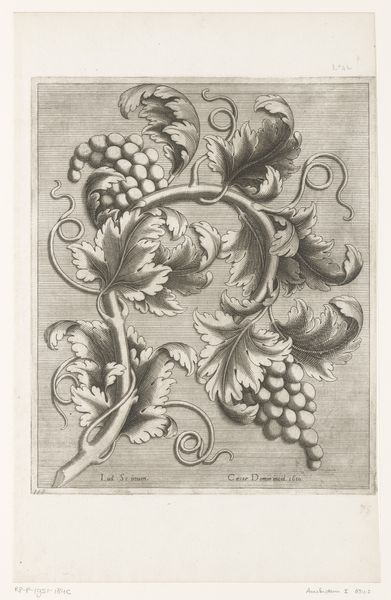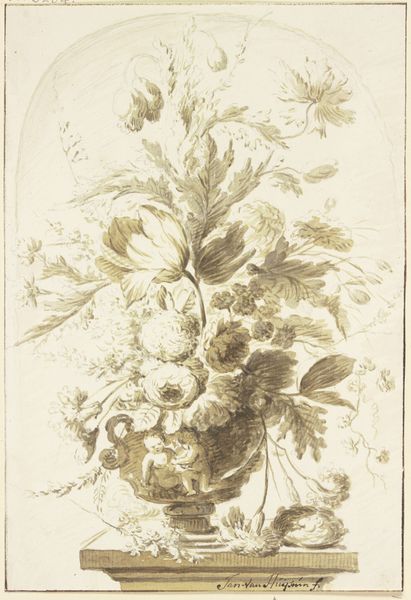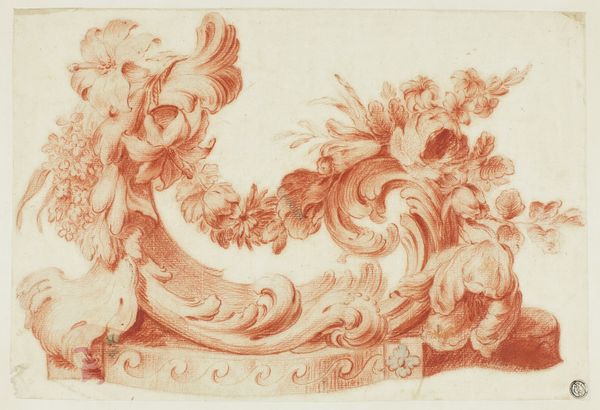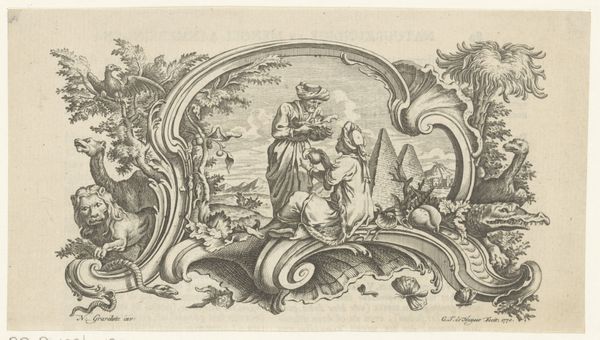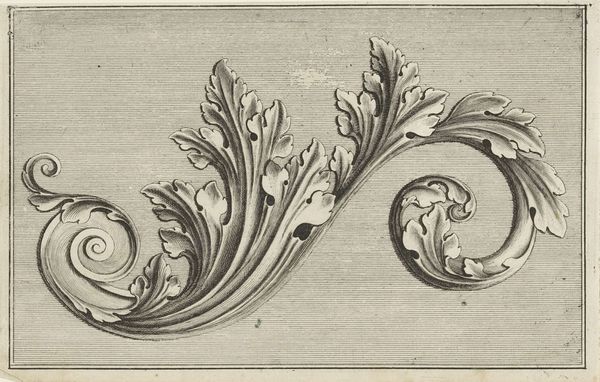
graphic-art, ornament, print, engraving
#
graphic-art
#
ornament
#
baroque
# print
#
old engraving style
#
engraving
#
rococo
Dimensions: height 202 mm, width 305 mm
Copyright: Rijks Museum: Open Domain
Editor: Here we have Emanuel Eichel's "Rocaille Ornament met bloemen," created sometime between 1731 and 1775. It’s an engraving, full of swirling lines and botanical motifs. I’m struck by how artificial and stylized nature seems here, almost like a stage set. What symbols jump out to you in this design? Curator: What immediately captures my attention are those very stylized, almost theatrical flourishes, emblematic of the Rococo era. Think about the symbolism inherent in this type of decoration. It's not merely about aesthetic pleasure. The emphasis on shells – the ‘rocaille’ itself – connects us to the symbolism of birth, renewal, and pilgrimage. Editor: Pilgrimage? That's interesting! Curator: Yes! The shell, particularly the scallop, was the emblem of St. James and thus connected to pilgrimage routes. Its inclusion subtly weaves themes of journeys, both physical and spiritual, into the very fabric of the design. These flower arrangements are a memento mori too, emblems of fleeting nature. What about the tension between artifice and nature in your view? Editor: It makes me wonder if this was meant to comment on the separation of the wealthy from the natural world...a controlled, curated nature. Curator: Precisely. The image operates on multiple layers: aesthetic delight, of course, but also subtle reminders of life's journey and its transient beauty, viewed through the lens of social positioning. It uses universal visual memory. A sign language. Editor: It’s amazing to consider all those embedded meanings in what at first seems like just a pretty ornament. Curator: Exactly. The cultural memory encoded in seemingly simple images can reveal so much about a specific time and place.
Comments
No comments
Be the first to comment and join the conversation on the ultimate creative platform.
